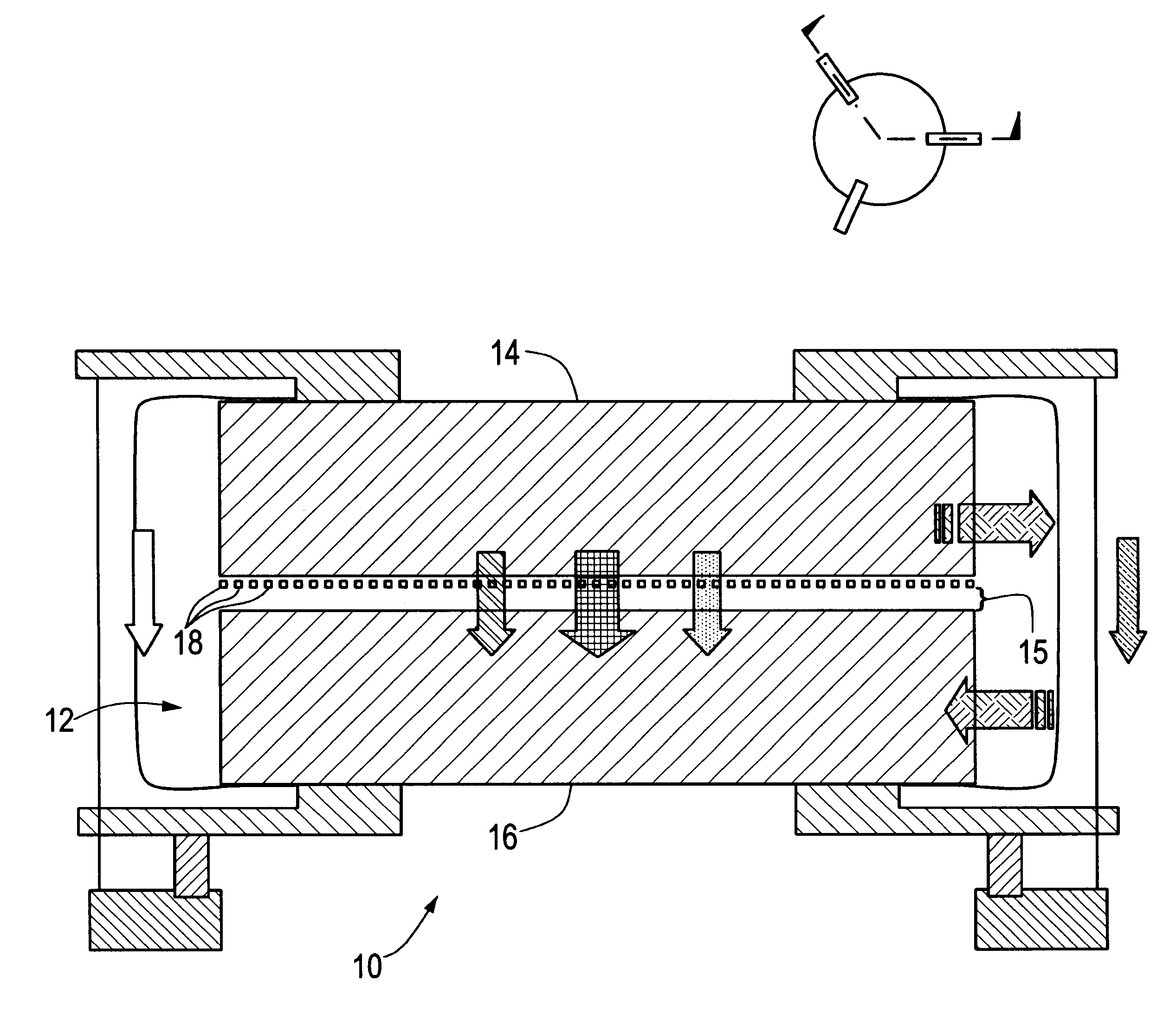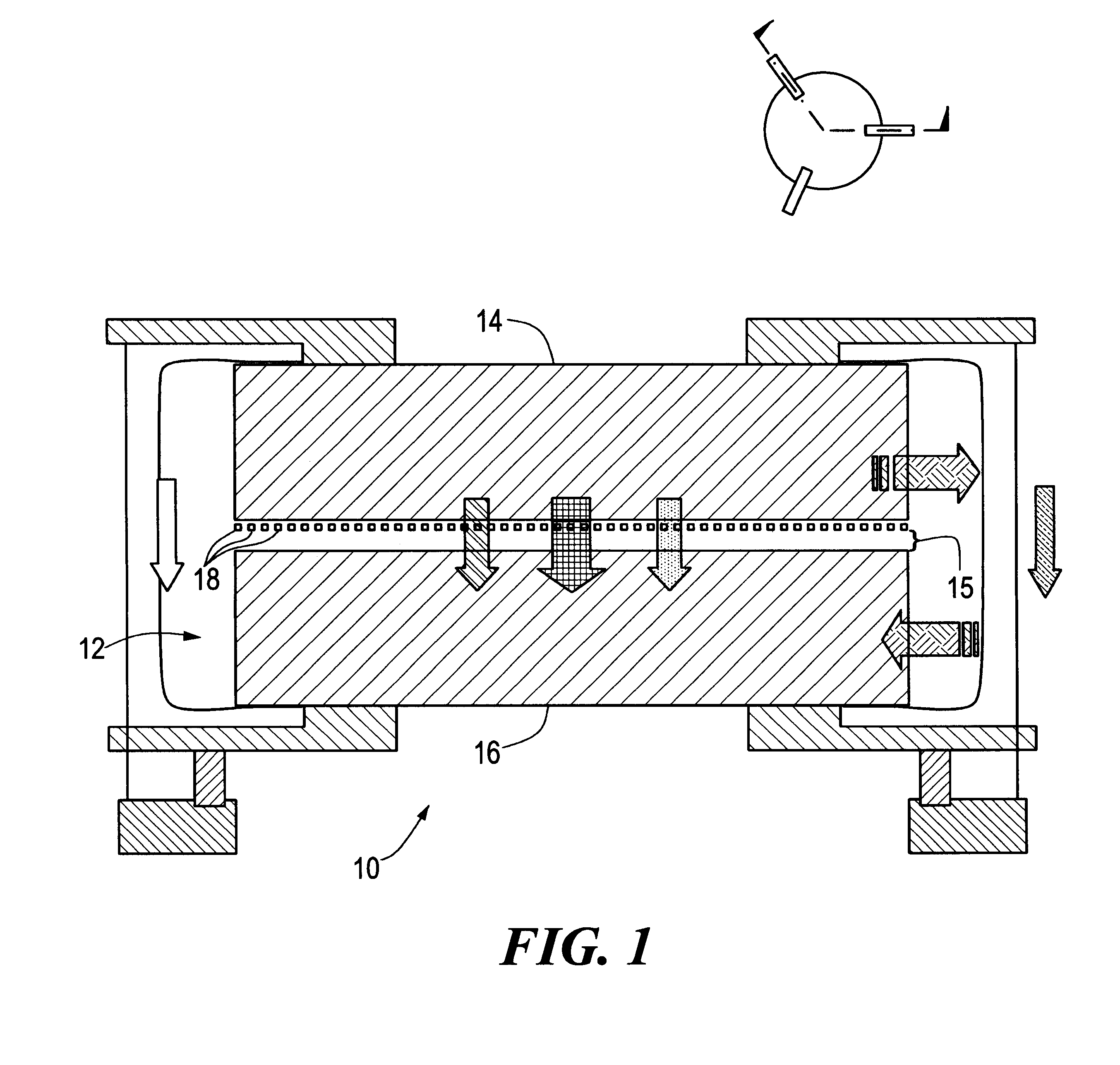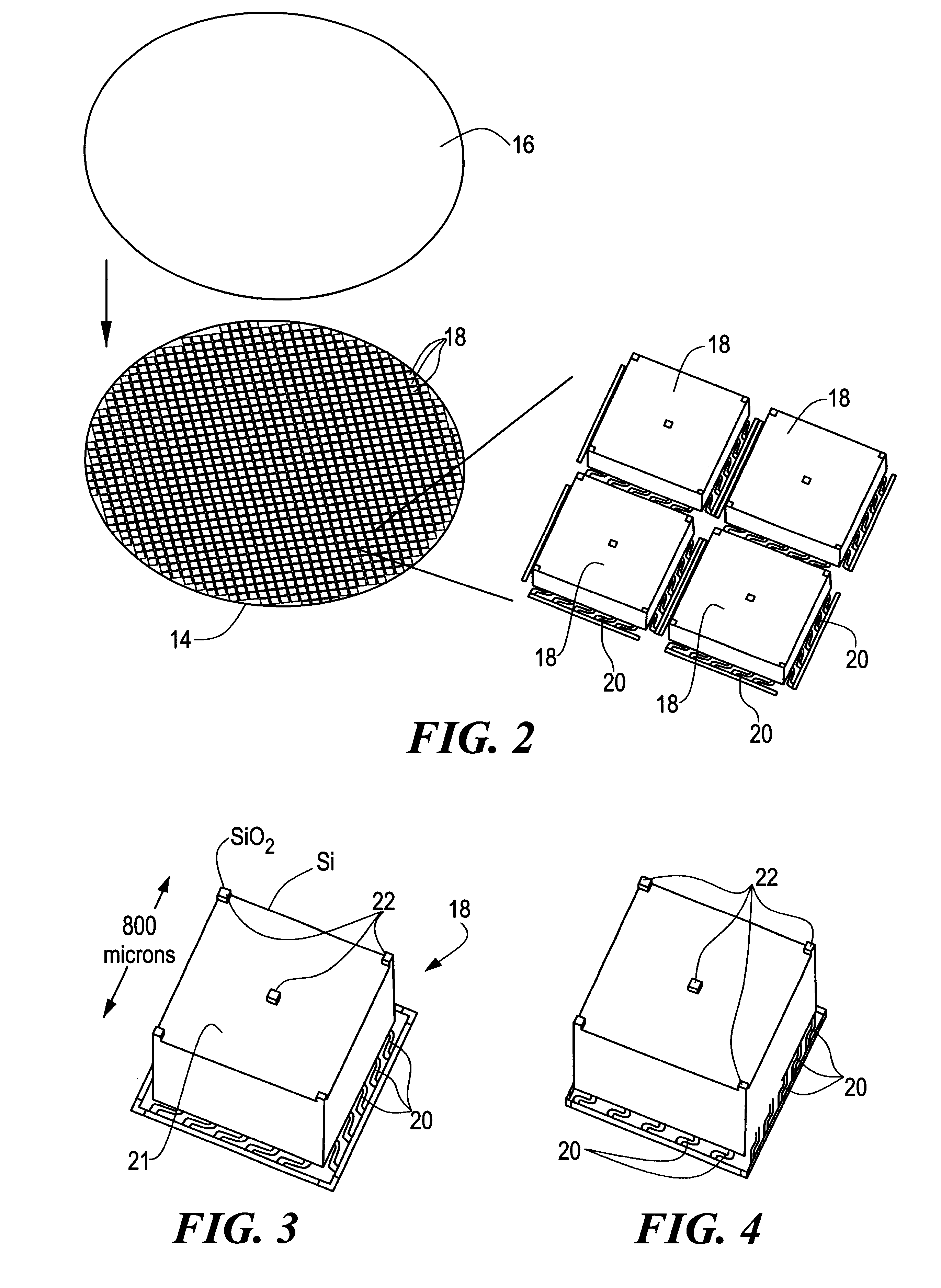Microcavity apparatus and systems for maintaining a microcavity over a macroscale area
a microcavity and microcavity technology, applied in the manufacture/treatment of thermoelectric devices, pv power plants, generators/motors, etc., can solve the problems of uncontrollable power output variance and temperature increase limited by the material of the devi
- Summary
- Abstract
- Description
- Claims
- Application Information
AI Technical Summary
Benefits of technology
Problems solved by technology
Method used
Image
Examples
Embodiment Construction
Microscale generator 10, FIG. 1, typically includes a pair of facing elements 14 and 16 within vacuum 12 having a temperature gradient therebetween. First element 14 acts as a thermal source for transferring energy and second element 16 receives the energy transferred. However, this is not a necessary limitation of the invention as element 16 could instead act as the thermal source while element 14 receives the energy. In order to maintain a fixed spacing between elements 14 and 16, one of the facing elements is sectioned into much smaller surface areas (referred to below as panels) which easily conform to variations in the surface of the facing element.
Disposed on one of the facing elements, shown here as first element 14, is an array of individual, independently passively or actively moveable panels 18 which are thermally coupled to element 14 and spaced from facing element 16 a predetermined, sub-micron distance to efficiently and evanescently couple the energy between elements 1...
PUM
 Login to View More
Login to View More Abstract
Description
Claims
Application Information
 Login to View More
Login to View More - R&D
- Intellectual Property
- Life Sciences
- Materials
- Tech Scout
- Unparalleled Data Quality
- Higher Quality Content
- 60% Fewer Hallucinations
Browse by: Latest US Patents, China's latest patents, Technical Efficacy Thesaurus, Application Domain, Technology Topic, Popular Technical Reports.
© 2025 PatSnap. All rights reserved.Legal|Privacy policy|Modern Slavery Act Transparency Statement|Sitemap|About US| Contact US: help@patsnap.com



